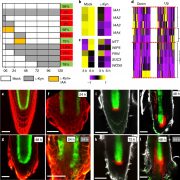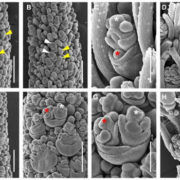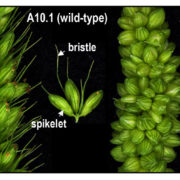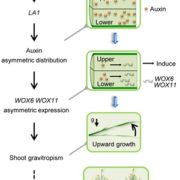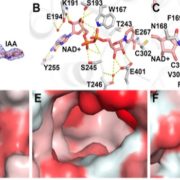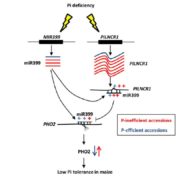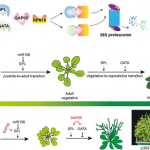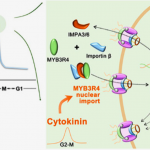Mechanism and function of root circumnutation (PNAS)
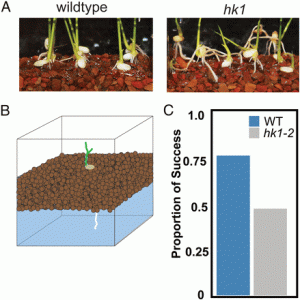 This is an engrossing paper. The authors start off with a simple mutant screen for abnormal root growth in rice seedlings, through which they identified three “long root” mutant alleles of a rice mutant in a gene encoding a histidine kinase, HK1. Careful analysis showed that the mutant roots fail to circumnutate (a growth pattern derived from helical movement at the tip). Part of this paper is a conventional analysis of the molecular underpinning of this circumnutation, revealing roles for ethylene and intercellular auxin movement, but the other part is an intriguing quest to understand the function of circumnutation. For this, the authors developed a robotic root, which allowed them to test how helical tip movements affect growth. These studies support a model in which a non-circumnutating root that hits an obstacle “head on” will get stuck, whereas a circumnutating tip will successfully go around obstacles (clearly shown in this video). This model is further supported from growth assays using the hk1 mutant; wild-type roots can push through gravelly substrates, whereas the non-circumnutating roots cannot, leading to a failure of the seedling to successfully anchor to the substrate (again, watch the video). This would be a great paper to read with students, as both the question and findings are straightforward, novel, and interesting. (Summary by Mary Williams @PlantTeaching) Proc. Natl. Acad. Sci. USA 10.1073/pnas.2018940118
This is an engrossing paper. The authors start off with a simple mutant screen for abnormal root growth in rice seedlings, through which they identified three “long root” mutant alleles of a rice mutant in a gene encoding a histidine kinase, HK1. Careful analysis showed that the mutant roots fail to circumnutate (a growth pattern derived from helical movement at the tip). Part of this paper is a conventional analysis of the molecular underpinning of this circumnutation, revealing roles for ethylene and intercellular auxin movement, but the other part is an intriguing quest to understand the function of circumnutation. For this, the authors developed a robotic root, which allowed them to test how helical tip movements affect growth. These studies support a model in which a non-circumnutating root that hits an obstacle “head on” will get stuck, whereas a circumnutating tip will successfully go around obstacles (clearly shown in this video). This model is further supported from growth assays using the hk1 mutant; wild-type roots can push through gravelly substrates, whereas the non-circumnutating roots cannot, leading to a failure of the seedling to successfully anchor to the substrate (again, watch the video). This would be a great paper to read with students, as both the question and findings are straightforward, novel, and interesting. (Summary by Mary Williams @PlantTeaching) Proc. Natl. Acad. Sci. USA 10.1073/pnas.2018940118


